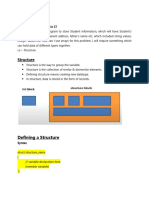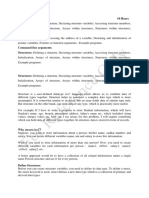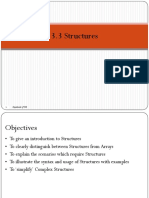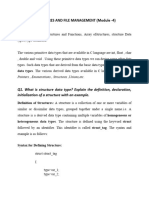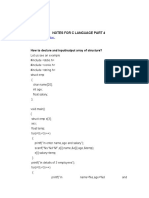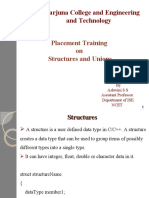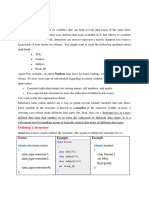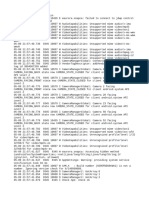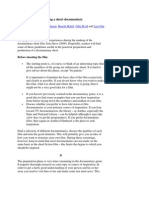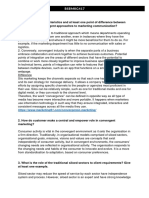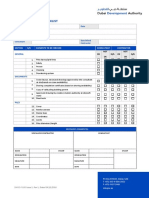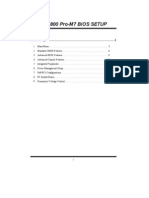0% found this document useful (0 votes)
115 views43 pagesUnit 5 Structure Union and File Handling
The document discusses structures in C programming. It defines a structure as a user-defined data type that groups related data of different types under a single name. It provides examples of defining, declaring, initializing, and accessing structures and structure variables. It also discusses arrays of structures and structures within structures.
Uploaded by
Preetha VCopyright
© © All Rights Reserved
We take content rights seriously. If you suspect this is your content, claim it here.
Available Formats
Download as PPT, PDF, TXT or read online on Scribd
0% found this document useful (0 votes)
115 views43 pagesUnit 5 Structure Union and File Handling
The document discusses structures in C programming. It defines a structure as a user-defined data type that groups related data of different types under a single name. It provides examples of defining, declaring, initializing, and accessing structures and structure variables. It also discusses arrays of structures and structures within structures.
Uploaded by
Preetha VCopyright
© © All Rights Reserved
We take content rights seriously. If you suspect this is your content, claim it here.
Available Formats
Download as PPT, PDF, TXT or read online on Scribd
/ 43

















